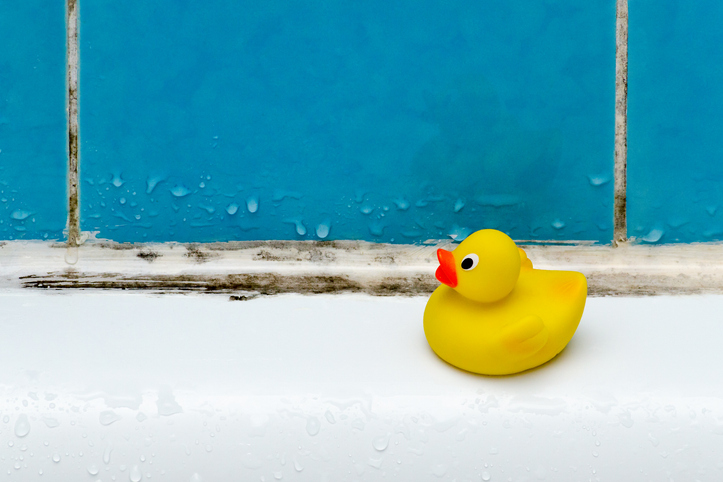“The fungus is among us” is both a funny rhyme and an absolute fact. Our world is filled with microscopic fungi. Mold spores thrive in soil, on plants, and on things in decay, breaking down organic components and returning nutrients into the ecosystem. Unfortunately, it’s not just outside in the woods where mold works to perform the organic decomposition process.
Here at Maertin Heating and Cooling, we know that mold spores travel into our homes and remain dormant until fueled by moisture and oxygen. Mold cannot be wholly eliminated from our environment, and so when excessive moisture is present in a home, mold can begin spreading. Your home’s HVAC system works to keep air circulating and humidity low, so the most likely culprit for mold is a water intrusion, perhaps from a leaky roof or a seeping basement. In some houses, poor ventilation may exacerbate moisture issues.
It’s obviously very healthy to have oxygen and moisture in our homes, but when moisture levels are wrong, the chances of mold growth in our homes increases.
Mold is bad for the home and the people living in it. The molds that break down rotting trees and animal carcasses will just as likely try to break down your attic insulation or basement drywall. The longer mold goes untreated, the more damage it will cause and the more expensive it will be to remediate and repair. That process of breaking down matter also means molds are spreading chemical components such as allergens, toxins and even more spores throughout the house. Those airborne particles can cause allergic reactions, asthma flair ups, headaches, and other respiratory issues, particularly in cases of long-term exposure or for the very young and very old.
Homeowners who want to keep mold out of their homes should know that there’s no way to keep these natural occurring spores from getting inside. Instead, experts talk about “mold control,” a process of keeping naturally occurring molds from activating and spreading. The real target in mold control isn’t mold; it’s moisture. Always address any leaks, spills, or backups quickly and thoroughly, within 24 hours of the incident. Keep gutters and downspouts clean and direct water away from the house. Use exhaust fans during and after cooking or showering. Run a dehumidifier in dank basements or talk to us about whole-house humidity control. Keep your house dry, between 30-50% humidity. Not sure of your home’s humidity level? Just ask us for help!
In the event you do notice mold, address the underlying moisture issue by sealing the leaky faucet or roof shingle and maintaining a lower home humidity. Then, get rid of the mold. The EPA notes that most homeowners can clean and remediate early mold outbreaks when the area is smaller than 10 square feet. Most instances of mold are easily identifiable and do not require testing. Mold can be cleaned, wearing gloves and a mask, with warm water and detergent, and the area should be completely dried immediately. While there are biocides and fungicides on the market to treat molds, experts recommend against routine use of these treatments and other bleaching techniques. These chemicals can be caustic and while they kill molds, they leave behind dormant spores that can be reactivated by future moisture. Removing the mold is just as important as killing it.
Any material destroyed by the mold and any absorbent materials affected should be removed and replaced. If those materials are irreplaceable, contact restoration experts who can safely mitigate the mold. Do not paint or caulk over mold. If the mold is larger than 10 square feet or if the moisture was caused by wastewater, such as from a sewer back-up, contact experts trained in mold and wastewater mitigation.
You may also want to contact an expert if you suspect mold, but can’t see it. Maybe you catch a whiff of a moldy smell in one corner of the basement. Maybe you experienced water seepage and aren’t sure how much of it seeped into your walls. Experts call mold in these spaces “hidden mold” and advise homeowners bring in professionals inspect for it. Your ducts may need to be inspected and cleaned as well.
Your Maertin Heating and Cooling team can also help you identify ventilation and dehumidification options that will prevent future mold outbreaks.
When you have questions about your home’s humidity levels, make an appointment with Maertin Heating and Cooling. We’ll be happy to help your family live healthier!



